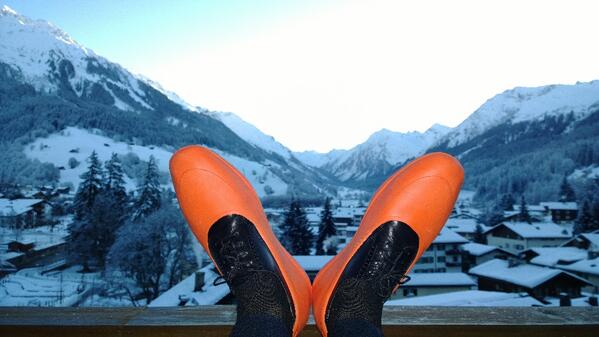PARIS, France – This has turned out to be the year that world leaders were drawn to Twitter like screaming teenage girls stampeding into a One Direction concert.
According to a new report from Burson-Marsteller, the number of national governments officially on Twitter has grown from just a handful four years ago to 83% of the 193 UN member countries. In addition, 68% of all heads of state now have Twitter accounts.
“You will see that digital diplomacy today is done in 140 character bursts,” said Matthias Lüfkens, digital director of Burson-Marsteller, in a recent presentation at the LeWeb 2014 conference last week. “Twitter is a formidable tool to broadcast, but also to make connections with peers.”
Great! So can we assume all these world leaders are coming together, laying down arms, and singing rounds of “It’s A Small World” as they join forces to end hunger and poverty?
Nope.
Like lesser humans everywhere, these world leaders have discovered Twitter’s real uses: selfies and trolling.
“The tweets are less and less diplomatic and we see more and more personal attacks and trolling,” Lüfkens said. “My fear is that 2015 might become the year of digital warfare.”
#Bummer.
For the record, here are the top 5 followed world leaders:
Modi is notable because his following grew massively after he became India’s new prime minister earlier this year. That dropped Turkey’s President Recep Tayyip Erdoğan down a notch.
Lüfkens said there were a growing number of these leaders following and tweeting each other. So he remains hopeful this may yet lead to better diplomatic relations.
“Foreign ministers use Twitter to make connections,” he said. “We don’t know how much is going on behind the scenes. But there is a digital network that has been created.”
That said…
“2014 was really the year the selfie craze hit the highest echelons of government,” Lüfkens said. “I think this is much more fun, much more interesting than handshake pictures. We still see too many handshake pictures on the Twitter streams of our world leaders.”
A year ago, Obama caused controversy by taking a selfie at the Nelson Mandela funeral. Modi made a notable contribution with a selfie from the voting booth. Finnish Prime Minister Alexander Stubb has revealed he has a bit of a footwear fetish.
But Lüfkens said it is Malaysian Prime Minister Mohd Najib Tun Razak, who apparently even owns a selfie stick, who has really become the most obsessed selfie taker.
My selfie with President Obama ! pic.twitter.com/mr94wZtmuA
— Mohd Najib Tun Razak (@NajibRazak) April 27, 2014
This might be silly, but in his talk, Lüfkens said much of the diplomatic back-and-forth on Twitter took a harsher turn this year. He cited the conflict in Ukraine as one example.
The Kremlin Twitter account’s most retweeted post was an announcement of its annexation of Crimea. The U.S. State Department countered by launching a campaign of support for Ukraine using the hashtag #UnitedForUkraine. The Kremlin in turn answered by also starting to use the hashtag, Lüfkens said.
Then there was this tweet from NATO:
Geography can be tough. Here’s a guide for Russian soldiers who keep getting lost & ‘accidentally’ entering #Ukraine pic.twitter.com/RF3H4IXGSp
— Canada at NATO (@CanadaNATO) August 27, 2014
That prompted this reply from Russia:
2. Russians at NATO: Helping our Canadian colleagues to catch up with contemporary geography of #Europe @CanadaNATO pic.twitter.com/6HLmHykIsd
— Katerina Kondova (@kkondova) August 28, 2014
And after NATO tweeted satellite photos of Russian troops invading Ukraine, the Russian embassy in UAE fired back with this reply:
#NATO‘s latest evidence of #Russian armor invading #Ukraine has been leaked! Seems to be the most convincing ever! pic.twitter.com/nMdXdILX6q
— Russian Embassy, UAE (@RusEmbassyUAE) September 3, 2014
“We’ve seen that because of the events in the Ukraine,” Lüfkens said, “diplomacy on Twitter has really become a digital battleground.”
Here’s Lüfkens’ full talk from LeWeb 2014:
And his slides:
VentureBeat's mission is to be a digital town square for technical decision-makers to gain knowledge about transformative enterprise technology and transact. Learn More


